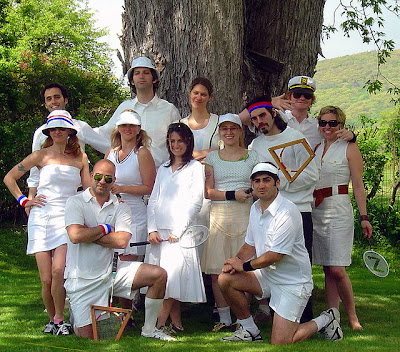Taking photos of groups of people is something that we have all done right from our school days, during excursions, family get-tog ethers etc. Most shots come out ordinary, they don’t look just as good as the ones you see made by professionals.
 |
| Photo By Fensterbme |
Group photography offers many challenges to the photographer. It is more of an advanced skill in photography as the complexities of every element such as lighting, posing, framing etc are all increased multi fold than when photographing individuals. In this article we will discuss some tips and tricks to improve your group photography skills.
1. Depth of Field
Depth of field is a very important element when photographing groups. You will need sufficient depth of field so as to have all your subjects within acceptable range of sharpness, meaning every single individual in the picture needs to be in focus. Often times photographs of groups where people were arranged in multiple lines come up with only faces in the front rows being in focus and the rest are all blurred. Such a thing could completely ruin the picture. Be sure to use a minimum aperture value of f/11 and to set your focus to the Hyper Focal Distance to get all your subjects sharp.
 |
| Photo By Teddy Rised |
2. Lighting for Groups
Lighting for groups is a much more complex affair than lighting for portraits and other subjects. In group photography the key is consistent illumination. Make sure each and every one of your subjects receive the same quantity and quality of light without creating hot spots or shadows on faces. It appears simple but in reality is a much more complicated affair especially when you are photographing a group which consists of people of both light and dark skin tones. Having a thorough understanding of photographic principles like the Inverse Square Law of light will help you solve a number of lighting related issues.
 |
| Photo By Aditya Mopur |
3. Posing for Group Photos
Posing a group of people for a photograph is a challenging affair, when you get someone’s expression and pose right, someone else will have it all wrong, it takes skill and a bit of patience to master the art of posing people for group photos. One thing I would recommend is to experiment with different creative ideas rather than following the tried and trusted method of making people stand in straight lines, counting to 3 and click. If for the sake of having a safety net do take one this way but then do something creative, go candid, break the rules, let your imagination run wild, go with the flow, be spontaneous and later you would be happy you did experiment.
 |
| Photo By Kenzi Punzalan |
4. Clothing and Colours
When photographing groups you would not have control over what people are wearing, but you have control over where to place them in the group. Take a note of the type of dress, its colour, brightness, reflective property etc and arrange them all in a aesthetically pleasing way.
 |
| Photo By Hysterical Bertha |
5. Choose an Interesting Background
Pay attention not only to your subjects, but to the background as well. Backgrounds are as important as your subjects, if not more. They give a mood, feel and context to your images. Changing the background could drastically change the look of the picture. So choose your backgrounds wisely, consider the occasion and choose one that complements the scene it will be much more attractive than the plain backgrounds in your studio.
 |
| Photo By Peter Davis |
6. Alter your Perspective
Ever wondered why most group photos look the same. The major reason is that they were all taken by someone who was standing with a camera in hand, meaning most group pictures are taken from more or less the same height from the ground. If you wish your group photographs to stand out from the crowd try altering your perspective, shoot from down below, shoot from the high above and thus vary the angle from which you view your subject there by giving them a new perspective.
 |
| Photo By Julian Schungel |
7. Shoot in Bursts
When photographing a number of people, chances are high that something or the other might go wrong, someone might have blinked, someone might have yawned, had the wrong expression, might have looked elsewhere etc. you could never tell if everything went right by looking at your camera’s LCD. The best solution to these is to put the camera in continuous shooting mode and shoot in bursts. This way even if something goes wrong in one shot, you might have it right in the next one. And with Photoshop to your aid you could easily make things right.
 |
| Photo By Ben Eenhoorn |
Post a Comment